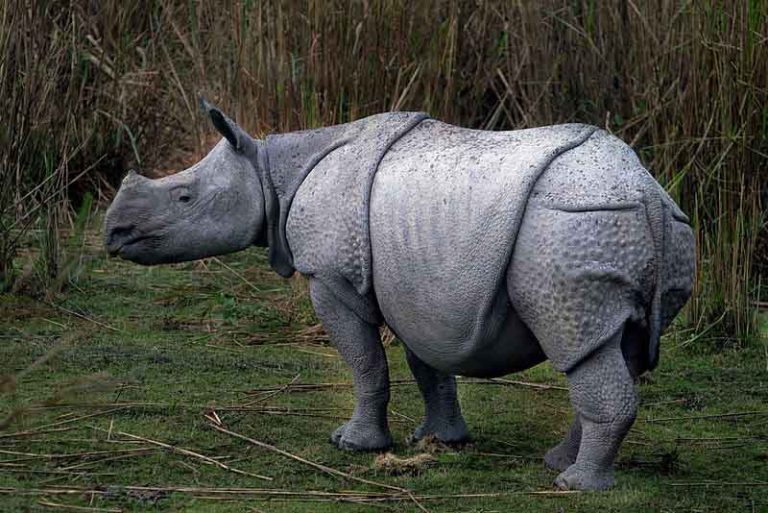Kaziranga National Park Assam 2024 | Kaziranga National Park Assam Travel Guide | Kaziranga National Park & Tiger Reserve | Things To Do in Kaziranga National Park | Best Time to Visit | Timings | Entry Fee | Safari
Kaziranga National Park Assam 2024
Kaziranga National Park, located in the Golaghat and Karbi Anglong districts of the state of Assam in the eastern region of India, is home to two-thirds of the world’s one-horned rhinoceros. Apart from being a national park, Kaziranga is also the famous Tiger Reserve of India.
Apart from this, in 1985, Kaziranga National Park has declared a UNESCO World Heritage Site. A census of the wildlife of the park was conducted jointly by the Forest Department of the Government of Assam and some recognized NGOs in Kaziranga in March 2018. According to that census conducted in 2018, the population of rhinos in the park was 2413.
The total rhinoceros population consisted of 1641 adult rhinos, of which 642 were male rhinoceros, 793 female rhinoceros and 206 asexual rhinoceros. Apart from adult rhinos, there were 387 sub-adult rhinos in the park, of which 116 male rhinos, 149 female rhinos and 122 asexual rhinos.
Apart from all this, there were also 385 rhino calves here. Even in the year 2015, when the wildlife census was conducted here, the population of rhinos in this park was 2401. Kaziranga National Park was also declared as Tiger Reserve in the year 2006, presently the total tiger population in this park is 118. Apart from rhinos and tigers, Kaziranga National Park is also home to wildlife like elephants, swamp deer and wild buffalo.
For the protection of native and migratory birds, this national park has also been declared an important bird conservation area by the International Organization for Birdlife. Compared to many major national parks of our country, Kaziranga National Park has achieved remarkable success in the conservation of wildlife. Kaziranga National Park, situated on the edge of the Eastern Himalayas, is also rich in a variety of vegetation.
Because of this, the natural scenery seen here keeps you captivated here. Kaziranga National Park Due to the elephant grass found here, dense forest with dense tropical trees and marshy land, this national park proves itself to be different from other wildlife sanctuaries in India. Apart from being a national park with a variety of vegetation, the main water source of this park is the Brahmaputra river. Along with the Brahmaputra river, a total of four other rivers also flow here.
Apart from the rivers, there are many other small water sources of this national park water. Being a national park, Kaziranga National Park has also been mentioned in many books, documentaries and local songs. Kaziranga National Park was established in the year 1905. The 100th Foundation Day of this national park was also celebrated in the year 2005.
Kaziranga National Park History
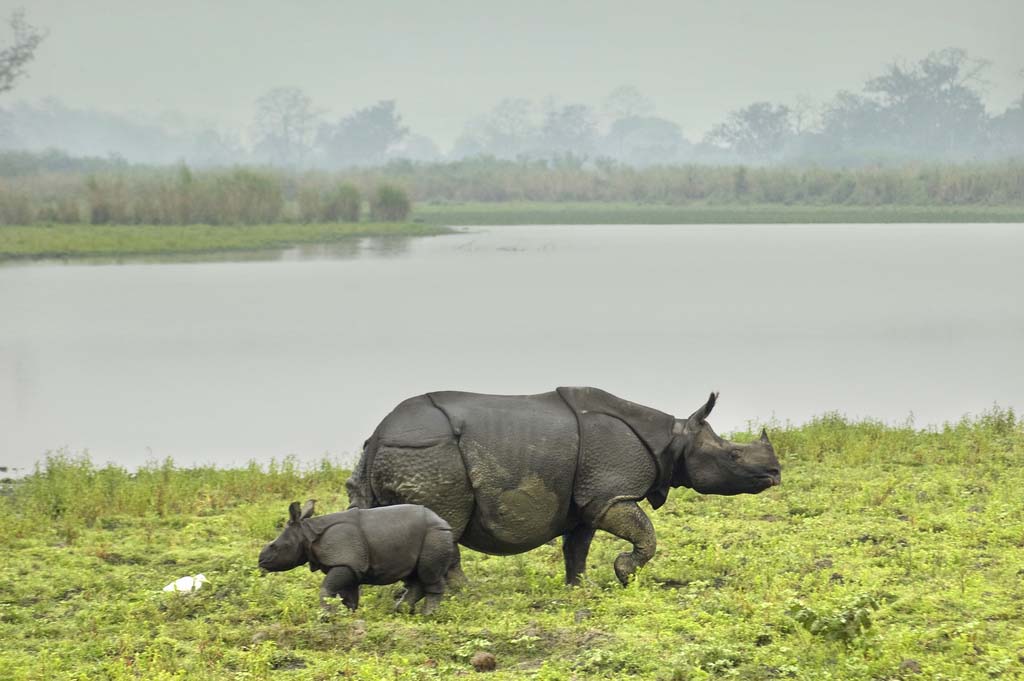
The history of the existence of Kaziranga National Park is linked to an event in 1904. In 1904, when the Viceroy of British India, Lord Curzon, along with his wife Mary Curzon, came to see the rhinoceros in this forest area. But for some reason, they do not see a single rhinoceros in this forest area.
Saddened by this, Mary Curzon, wife of Viceroy Lord Curzon, persuades him to protect the wildlife living in this forest area. Shortly after this event, on 01 June 1905, an area of 232 square kilometres (90 sq mi) of this forest area of Kaziranga was declared a reserve forest area. After this, for three consecutive years, the area of this reserve forest area is taken to the banks of the Brahmaputra river, increasing the area to 152 square kilometres (59 sq mi).
By 1908, Kaziranga has declared a reserved forest. In 1916 the name of this reserve forest area is changed once again. This time the name of this park is changed to Kaziranga Sports Sanctuary. After this, till 1938, a lot of hunting was done by the British authorities in this park, due to which many species of wildlife living here came to the verge of extinction. In 1938, hunting was once again banned in this park and this time tourists were allowed to enter this reserve forest.
After the independence of India, in the year 1950, the then forest conservationist PD Stracy changed the name of Kaziranga Sports Sanctuary again to Kaziranga Wildlife Sanctuary to remove the word hunting associated with this park. In 1954, to save wildlife like the almost extinct rhinoceros in Kaziranga, the Assam (Rhinos) Bill was passed in which a very heavy fine was imposed on poaching of rhinoceros.
In the year 1968, 14 years after the passage of this bill, the then state government of Assam passed the Assam National Park Act, under which Kaziranga was declared a national park. After this, on 11 February 1974, the Central Government officially granted the status of National Park to the forest area of 430 square kilometres (166 sq mi) of Kaziranga National Park.
After this, in the year 1985, due to the efforts made by the State Government and the Forest Department for the conservation of rhinoceros and due to the unique natural landscape here, UNESCO declared this national park as a World Heritage Site.
How Kaziranga National Park Got Its Name
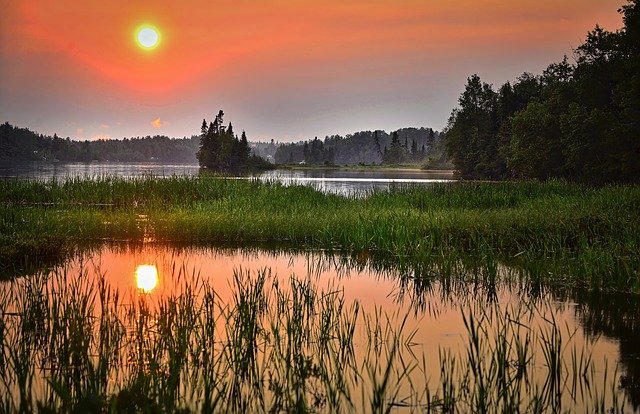
Many tales and stories are heard from the residents behind the naming of Kaziranga National Park, apart from this many events related to the naming of this park has been described by historians in their different books. The legends associated with the naming of this park are also heard a lot by the residents.
According to legend, a girl named Ravanga of a village located near Kaziranga National Park forest area falls in love with a boy named Kazi of Karbi Anglong village. But for some reason, the families of both these lovers did not approve of their relationship. For this reason, both these lovers named Ravanga and Kazi go to the forest one day and it is said that after this the people of both the villages never saw Ravanga and Kazi again.
For this reason, the villagers together named this forest Kaziranga. In the sixteenth century, the story related to the saint Shrimant Sankardev, who was associated with the Vaishnava sect, is also heard from the residents here. It is said that once Saint Shrimant Sankardev blessed the childless couple who lived here named Kazi and Rangai if they dug a big pond in this forest area.
So they will get very lucky children and at the same time, their names will also become immortal forever. Now some historians have also described many important developments related to this forest area in their books. According to a historian, the naming of Kaziranga National Park has been mentioned in many historical records.
According to the historian, when Ahom king Pratap Singh was visiting this forest area in the seventeenth century, he was very pleased with the taste of a fish found here. The king asked his servants where the fish had come from, then they got the answer that the fish had come from Kaziranga.
It is said that in the local colloquial language of that time, Kaziranga meant “Land of Red Goats (Deer)“. Apart from this, some historians also believe that the name Kaziranga is influenced by the word Kazir-e-Rong of the Karbi language. The literal meaning of Qazir-e-Rong is “Kazir’s Village”. Among the people of the Karbi tribe, the name of a girl named Qazir is also taken very prominently.
A woman named Kazir is said to have ruled the Kaziranga forest area and its surrounding area for many years. Fragments of monoliths belonging to the Karbi reign in Kaziranga and its surrounding area have been found by the Archaeological Department during excavations here, which further corroborates this claim of historians.
Kaziranga National Park Geography
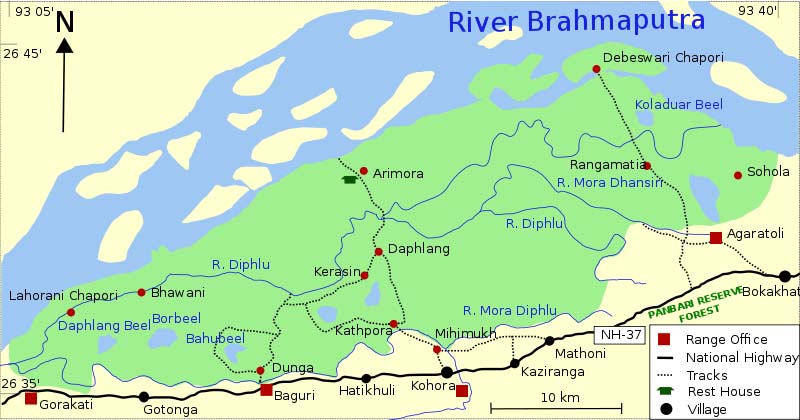
Kaziranga National Park is presently located in three districts of Assam namely Golaghat, Karbi Anglong and Nagaon district. Spread over 430 square kilometres (166 sq mi), the national park is 40 kilometres (25 mi) long from east to west and 13 kilometres (8 mi) wide from north to south.
Presently, the total area of Kaziranga National Park is 378 square kilometres (146 sq mi), as in recent years about 51 square kilometres (20 sq mi) of land has been lost due to erosion in the Brahmaputra Putra river. The maximum area of the park is spread over the plains, apart from this the height of Karbi Anglong Hills situated in the park is only 40 meters (131 feet) to 80 meters (262 feet).
Apart from the Brahmaputra river, three other rivers namely Diflu, Mora Dhansiri and Mora Diflu flow prominently in Kaziranga National Park. Most of the area of the park is fertile due to erosion and deposition of silt in the rivers flowing here and another main reason for this is that most of the land area of the park is also flat.
Some areas of Kaziranga are located above the ground, such places are called by the people here as Chapori. Whenever there is a flood situation here, most of the wildlife of the park go to such high places for their safety. Kaziranga receives a lot of rain during the monsoon, so to ensure the safety of the wildlife living here, the Indian Army has also constructed several huts in this park.
This national park is geographically one of the largest protected areas of the sub-Himalayan belt, and because of this, you can also see the highest diversity of wildlife here. Kaziranga National Park is also described as a “Biodiversity Hotspot” due to the maximum diversity of wildlife in the park.
Kaziranga National Park is located in the Indomalayan region and hence the terrain of this park situated in the Brahmaputra Valley is full of tropical and sub-tropical moist broad-leaf forest. Apart from this, tropical and subtropical grasslands are also formed in the park, in which lowland and savanna grass is prominent.
These grasslands of the park are prone to floods during the monsoon season. In the vicinity of Kaziranga National Park, you are surrounded by tea plantations. Situated near the park, these tea gardens contribute a lot to the economy of Assam.
Kaziranga National Park Fauna
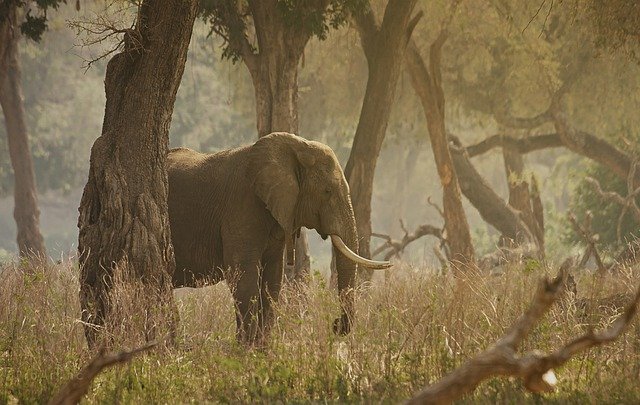
Kaziranga National Park is a protected forest area considered suitable for the breeding of wildlife of 35 important mammalian species. Of these 35 mammalian species, 15 species of wildlife are on the verge of extinction according to the IUCN Red List. Kaziranga National Park is famous all over the world mainly for the conservation of one-horned rhinoceros. The number of one-horned rhinos in this national park is 2413 as per the 2018 census.
Apart from rhinos, the park has a population of 1666 wild Asian water buffalo, 118 Bengal tigers and 468 eastern swamp deer. Apart from all this, the Indian elephant population in this park is 1940, 58 sambars and 1300 gaur are also included. Kaziranga National Park is home to more than 57% of the world’s wild water buffalo population, which is the largest in the world.
The largest five wildlife species in the park include the Royal Bengal Tiger, the one-horned rhinoceros, the Asian elephant, the swamp deer, and the wild buffalo. This five wildlife are also addressed here as “Big Five“. Along with the wildlife sanctuaries of India and other countries of the world, Kaziranga National Park has also been considered very suitable for the breeding of predatory wildlife like tigers and leopards.
For this reason, Kaziranga has also declared a Tiger Reserve in the year 2006. Presently a population of about 118 tigers is found in this park. According to a survey, 1 tiger is found per 5 square kilometre area of the park. Apart from tigers and leopards, many species of cats are also found in this park including fishing cats, wild cats and leopard cats.
Small mammalian wildlife is also found in large numbers in the park, mainly Indian grey mongoose, hispid rabbit, large Indian civet, Bengal fox, small Indian mongoose, small Indian civet, Chinese pangolin, Chinese ferret badger, hog badger, golden jackals, Indian pangolins and sloth bears etc.
Out of 14 primate species found in India, 09 primate species are found in Kaziranga National Park. These include the capped langur, the Assamese macaque, the golden langur and the hoolock gibbon, which is found only in India. Apart from all this, you can also see wild boar, hog deer and Indian muntjack in this national park. Kaziranga National Park is also home to the almost extinct Ganges Dolphin.
Apart from wildlife, you can also see a large number of reptiles here. Two of the world’s largest snakes, the reticulated python and the rock python, live in Park, and the world’s most venomous snakes include the king cobra, Indian cobra, Russell’s viper, krait and monocoloured cobra.
Apart from snakes, you also see many species of lizards in the garden, in which Asian water monitor and Bengal monitor are prominent. This national park is home to about 15 species of turtles. About 42 types of fish species reside in the rivers flowing in Park.
Bird in Kaziranga National Park
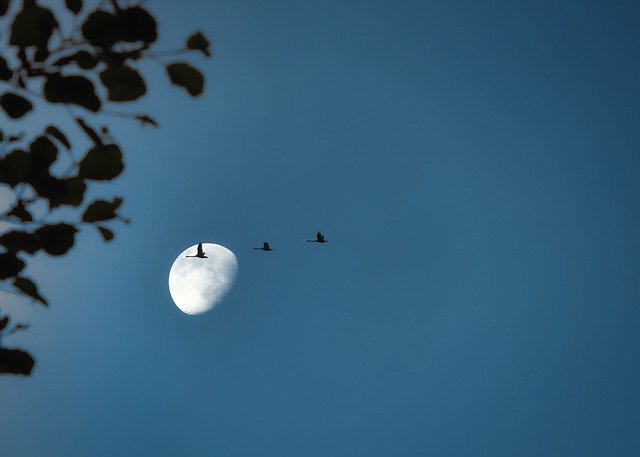
According to BirdLife International, Kaziranga National Park can also be developed as an important conservation area for native and exotic birds. This national park is also home to a variety of native and exotic birds, here you can see many migratory birds like water birds, predators, scavengers and game birds etc.
Due to the severe cold in Central Asia, many birds come to Kaziranga National Park. Birds from Central Asia include Lesser White-fronted Goose, Ferruginous Duck, Byer’s Pochard Duck, Lesser Adjutant, Greater Adjutant, Black-necked Stork and Asian Openbill Stork.
You can see white-bellied heron, spot-billed pelican, Blyth’s kingfisher, Dalmatian pelican, black-bellied tern and Nordman’s greenshank resting on the banks of the rivers flowing here. The park is also home to species of birds of prey including the rare Eastern Imperial, White-tailed, Greater Spotted, Palas Fish Eagle, Lesser Kestrel and Grey-headed Fish Eagle.
There was a time when Kaziranga National Park was home to seven species of vultures. But at present most of the vulture species have reached the verge of extinction. Experts believe the main reason for this is the eating of carcasses of animals containing diclofenac by vultures. At present, you see only Indian vultures, Indian white-tailed vultures and slender vultures in the park.
Birds of the game bird species include the Bengal florican, the swamp francolin and the yellow-capped pigeon. Apart from all this, many extinct species of birds can also be seen here, including Wreathing Hornbill, Great Indian Hornbill, Jordan Babbler and Marsh Babbler etc.
Kaziranga National Park Flora
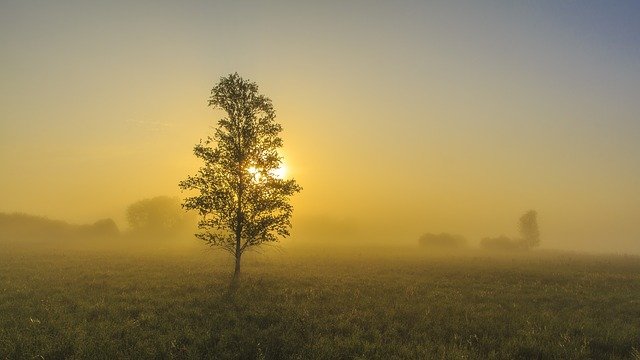
In Kaziranga National Park, you can see four types of vegetation mainly alluvial submerged grasslands, tropical moist mixed deciduous forests, alluvial savanna woodlands and tropical semi-evergreen forests. In 1986, an organization named Landsat researched the vegetation coverage located in the garden.
According to the figures of vegetation percentage in the crop during that research, the park has tall grass 41%, short grass 11%, open forest 29%, swamp 4%, rivers and water bodies 8%, and sand 6%. The western part of the park is located at a lower elevation, which is why you will see large grasslands in the western part of the park.
Small grasses located in the low plains cover the lakes formed due to beel or flood. Due to the high elevation of the eastern part of the park, you can see tall plants like elephant grass, sugarcane, spear grass and reed here. In the grasslands, you can find some shade-providing trees like Indian gooseberry, kumbhi, cotton tree and elephant apple etc.
In addition to all this, the evergreen forests located in the Kanchanjuri, Panbari and Tamulipathar zones of the park include Taluma hodgsonii, Ficus rumphi, Apanmixis polystachaya, Cinnamomum bejolghota, Dillenia indica, Garcinia tinctoria, and various species of psyllium. And most of the vegetation located in the Baguri, Bimali and Haldibari zones are tropical semi-evergreen forests.
Plants include Lagerstroemia speciosa, Li indica, shrubs, Sterculia urens, Gravia serrulata, Bridelia retusa, Albizia procera, Duabanga grandiflora, Apania rubra, Cratva uniloculis and Malotus philipensis. Various types of aquatic vegetation are also seen in the rivers, lakes and ponds located in the park.
The aggressive water bodies of the park are the largest, which are cleared during the formation of flood conditions so that there is no harm to the wildlife. Apart from this, Mimosa invisa is also found in other species of Kumbhi, which is very harmful to herbivorous wildlife, it was cleared in the year 2005 with the help of Wildlife Trust.
Kaziranga National Park Safari Zone
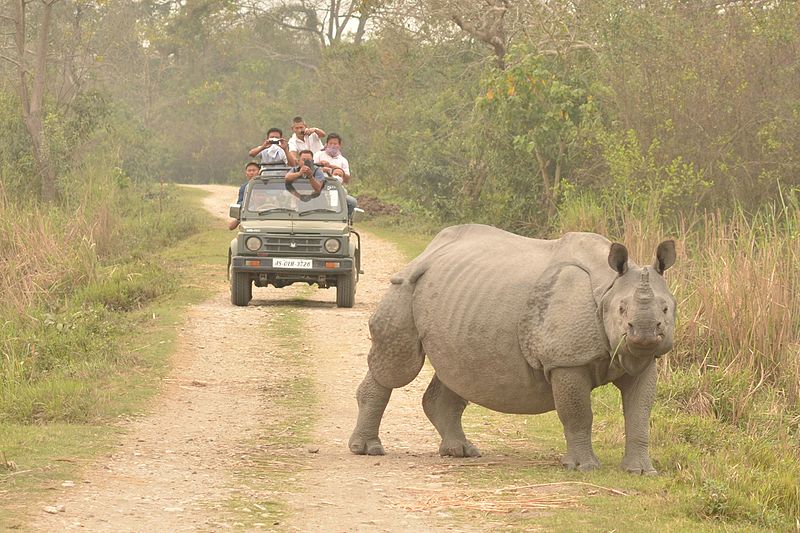
In terms of area, Kanjiranga National Park is spread over an area of only 430 square kilometres (166 sq mi). Despite having such a small area, this national park is extremely rich in wildlife and flora. According to tourism, Kaziranga National Park is divided into 4 zones. The four zones of Kaziranga National Park are known as Central Zone (Kohora Zone), Western Zone (Bagori Zone), Eastern Zone (Agartoli Zone) and Burpahar Zone.
Central Zone
Entrance Gate – Kohora
Safari Timings – 07:00 am to 09:45 am and 1:00 pm to 02:45 pm (times are subject to change)
Safari Type – Jeep Safari / Elephant Safari
Safari Route – Mihimukh – Kathpora – Daphlang – Difolu River Bank – Mona Beel – Karasing and Back
Safari Length – 27 KM
The entrance of the Central Zone of Kaziranga National Park is located just 02 kilometres away from the small town named Kohora located near the park. Safari in the Central Zone starts from a place called Mihimukh Riding Tower which is also considered to be the starting point of Elephant Safari in this part of the park.
You can enjoy both Jeep Safari and Elephant Safari in the Central Zone. The duration of a jeep safari in this part of the park is 02 hours and the duration of an elephant safari is 01 hrs. Tickets for Jeep Safari and Elephant Safari will be available at the ticket counter at the entrance of the Central Zone.
Western Zone
Entrance Gate – Bagori
Safari Timings – 07:00 am to 09:45 am and 1:00 pm to 02:45 pm (times are subject to change)
Safari Type – Jeep Safari / Elephant Safari
Safari Route – Dongabeel – Roman – Rajapukhuri – Monabeel and Back
Safari Length – 22 KM
The name of the entrance of the Western Zone of Kaziranga National Park is Bagori. Bagori is a place located near Kaziranga National Park, where the Bagori Tourism Office is also built. Bagori Tourism Office is also considered as the starting point of Western Zone.
The Western Zone is the zone in the Kaziranga National Park where you are most likely to see a one-horned rhinoceros. Therefore, the tourists who come to see the rhinoceros in this park mostly like the western zone. Jeep safari and elephant safari facilities are available for tourists in the western zone.
The Western Zone is considered the most suitable for Elephant Safari in Kaziranga National Park.
Eastern Zone
Entrance Gate – Agartoli
Safari Timings – 07:00 am to 09:45 am and 1:00 pm to 02:45 pm (times are subject to change)
Safari Type – Jeep Safari
Safari Route – Agartoli Sohola Beel-Rongamotia-Maklung-Turturoni-Dhoba & Back
Safari Length – 23 KM
The entrance to the Eastern Zone is located in the eastern zone of the Kaziranga National Park, near a small town called Agartoli. The tourist office near the entrance is also considered as the starting point of entry into the park.
There are many small and big water bodies in this part of the park, due to which you get the opportunity of boat safaris in the eastern zone apart from jeep safaris. You can also get to see many types of native and migratory birds in the Eastern Zone.
Burapahar Zone
Entrance Gate – Ghorakati Village
Safari Timings – 07:00 am to 09:45 am and 1:00 pm to 02:45 pm (times are subject to change)
Safari Type – Jeep Safari / Elephant Safari
Safari Route – Ghurkati-Potahi Beel-Difolu-Phuloguri-Tunikati
Safari Length – 16 KM
From Ghorakati village you can enter the Burapahar zone of Kaziranga National Park. The starting point of the safari in the Burapahar zone is Rhineland Park. This area of the park is mainly surrounded by mountains. This part of the park is considered the most suitable for bird lovers.
Apart from this, you also get to see the natural beauty of the park here. You can enjoy Jeep Safari and Elephant Safari in Burapahar Zone, apart from this you can also enjoy trekking in this part of the park.
Note:- 01 Duration of elephant safari in the park is only 01 hour.
02 The duration of a jeep safari in the park is just 02 hours.
03 Before entering the park, get information about all the rules related to the garden.
04 Every jeep safari is escorted by an armed forest ranger and no vehicle is allowed in the park without an escort.
05 Tickets for Kanjiranga National Park can be obtained from the office at the entrance of each zone.
06 There is no online ticket booking of any kind in Kaziranga National Park. For more information visit the official website of the park.
( https://nagaon.gov.in/frontimpotentdata/kaziranga-national-park )
Kaziranga National Park Weather
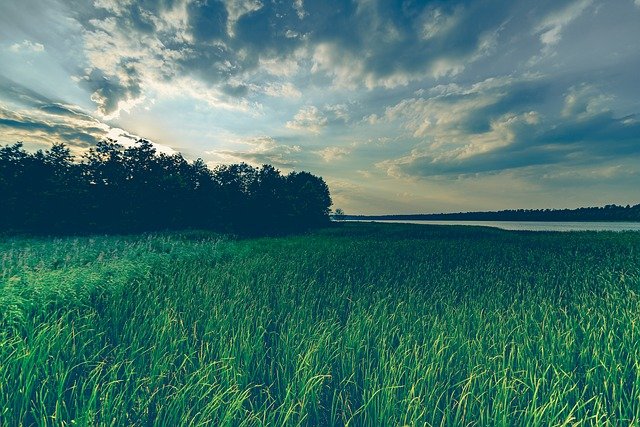
By the way, you get to see the same weather throughout the year in Kaziranga National Park. The winters here are neither too cold nor the summers too hot. The minimum temperature of this national park goes up to 10° degrees during the winter season and the maximum temperature goes up to 35° degrees during summer.
But there is a lot of rain here during the monsoon season, it is estimated that in the entire monsoon season, it rains up to about 2220 mm. Due to so much rain, flood conditions are created here every year, and due to so much rain, most of the wildlife moves towards the higher places.
Rainfall in July and August raises the water level of the Brahmaputra river flowing through the park, and three-fourths of the western part of the park is submerged in the increased water level. According to the data, on 03 August 2016, 70% of Kaziranga National Park was in the grip of floods. Because of this, most of the wildlife of the park had migrated to higher places.
Whereas in the floods in 2012, about 540 wildlife of the park lost their lives. Among the wild animals killed were 13 rhinos and the largest number of hog deer were killed. Many times the problem of drought has also been seen in this park during the summer season, due to which many times there is a problem of food for the wildlife in the park.
Kaziranga National Park Weather In Summer
March to June month – Max: approx 35℃ / Min: approx 17℃
Kaziranga National Park Weather In Monsoon
July to September month – Max: approx 32℃ / Min: approx 25℃
(Kaziranga National Park Park is closed for tourists during the monsoon season.)
Kaziranga National Park Weather In Winter
From October to February month – Max: approx 30℃ / Min: approx 10℃ and less.
Kaziranga National Park Best Time To Visit
The best time to visit Kaziranga National Park is from November to April. Assam receives a lot of rain during monsoon and pre-monsoon compared to other states of India, so this national park remains closed for tourists for about 5-6 months a year.
The park receives more than 2000 mm of rain, so at this time most of the park is submerged in water, after October, when the rain stops, the floodwater starts coming down. For this reason, the months from November to April are considered the best time to visit Kaziranga National Park.
Kaziranga National Park Opening Time
Kaziranga National Park is open for tourists from 01 November to 30 April. In May if the pre-monsoon rains are less then the garden can be found open but the chances of this are very less.
Kaziranga National Park Closing Time
Kaziranga National Park is closed for tourists from 01 May to 31 October. If the rain is less then the park is closed for tourists in June and can also be opened for tourists in the last week of September. But it completely depends on the local administration and the monsoon rains that are expected to happen.
Note:- 01 The local administration reserves the right to open and close Kaziranga National Park for tourists.
02 Therefore, before going for a walk in the park, make sure to know about its opening and closing time.
Kaziranga National Park Safari Timings
Kaziranga National Park Jeep Safari Timings
| Safari Zones | Morning Safari | Evening Safari |
| Kohora (central) Range | 07:00 AM – 9:45 AM | 01:00 PM – 2:45 PM |
| Bagori (western) Range | 07:00 AM – 9:45 AM | 01:00 PM – 2:45 PM |
| Agaratoli (eastern) Range | 07:00 AM – 9:45 AM | 01:00 PM – 2:45 PM |
| Burapahar (ghorakati) Range | 07:00 AM – 9:45 AM | 01:00 PM – 2:45 PM |
Kaziranga National Park Elephant Safari Timings
| Safari Zones | Morning Safari ( I ) | Morning Safari ( II ) | Evening Safari |
| Kohora (central) Range | 05:00 AM – 6:00 AM | N/A | 07:00 PM – 8:00 PM |
| Bagori (western) Range | 05:00 AM – 6:00 AM | 06:00 AM – 7:00 AM | 07:00 PM – 8:00 PM |
Note:- Timings of Jeep Safari and Elephant Safari are subject to change by the local administration.<

